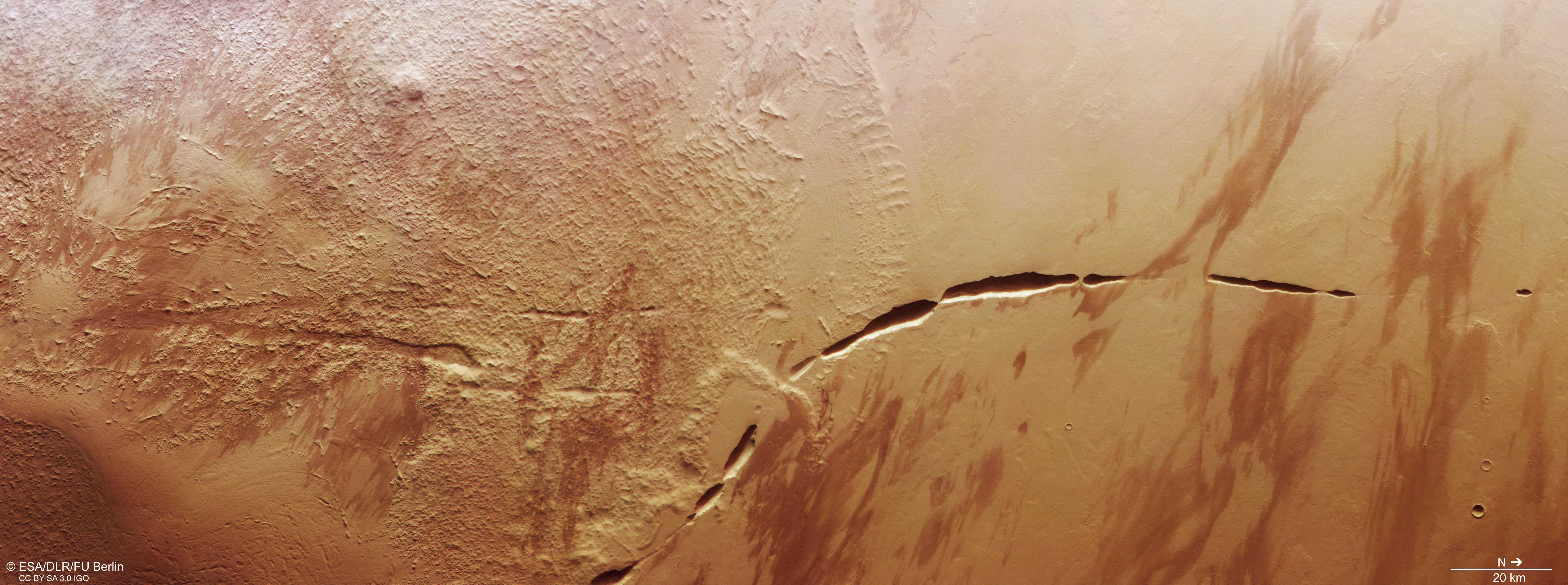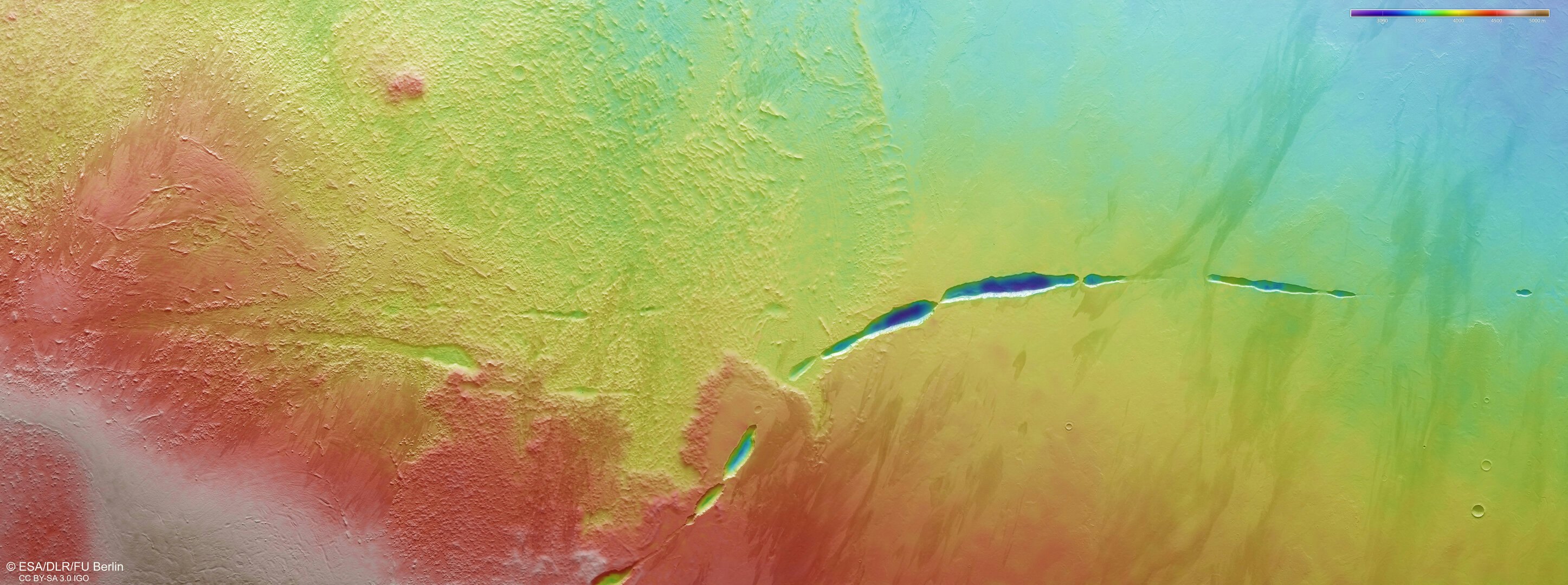
Mars Express captured this view of the flank of an enormous volcano, shaped by millions of years of fire and ice.
Images of the Martian landscape often seem to show a dead planet, no longer teeming with life (if it ever was) and no longer animated by plate tectonics. But this one reveals what was once a landscape in constant motion — sometimes sudden and violent, sometimes slow and inexorable. The northwest flank of the giant Martian volcano Arsia Mons bears the remnants of ancient lava flows, the tracks of long-vanished glaciers, and a long, deep scar left by magma straining to escape the confines of its chamber beneath the mountain.

Welcome to Arsia Mons
The Martian volcano Arsia Mons looms nearly 6 miles above the surrounding landscape, but its peak lies off-camera in this image from the European Space Agency’s Mars Express Orbiter. Instead, the image focuses on the volcano’s northwestern flank, which rises from the plain in a wide slope up toward the southeast (the lower left corner of the image).
To the southwest (the upper left of the image), the terrain is rough, with clusters of strangely-shaped mounds split by networks of valleys. As you move north, though, that rough terrain smooths out, giving way to a wide swath of gentle slopes and lobe-like cliffs. Ancient glaciers probably carved this terrain and wore it smooth — and left behind rocky debris in their wake. Farther east lie the remains of ancient, long-cooled lava flows, partially covered in zebra stripes of windblown sand and dust.

And curving northeast across the mountain’s lower slope is a 375-mile-long scar in the Martian ground known as Aganippe Fossa. This steep-walled trench is what geologists call a graben: an area where a planet’s crust is being stretched, creating cracks called faults. When the rock between the faults drops downward and creates the floor of a rift valley like Aganippe Fossa, it’s called a graben; the higher rocks on either side of the rift are called horsts.
Planetary scientists at ESA say Aganippe Fossa probably formed because a huge mass of magma beneath the feet of Arsia Mons was welling upward, stretching the planet’s rocky crust to its breaking point.
Aganippe Fossa is just part of a fascinating landscape once shaped by flowing lava and ice. Around Arsia Mons, satellite images show that the ceilings of some lava tubes (underground tunnels once filled with flowing magma) have collapsed inward, leaving these volcanic caves open to the Martian sky. And during the Martian autumn, an icy cloud wraps the top of Arsia Mons in a glittering shroud of ice droplets which can stretch hundreds of miles across the sky.







